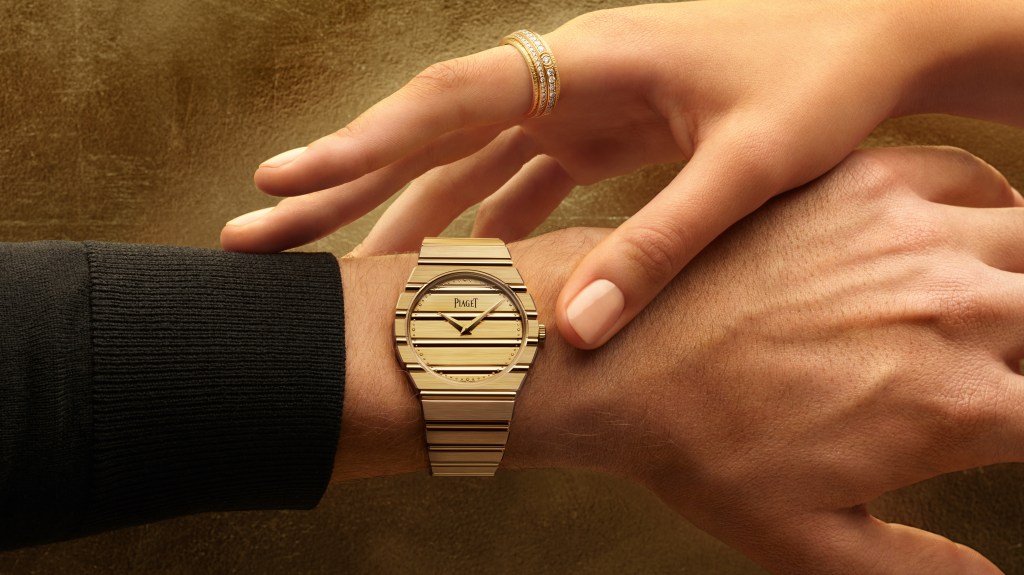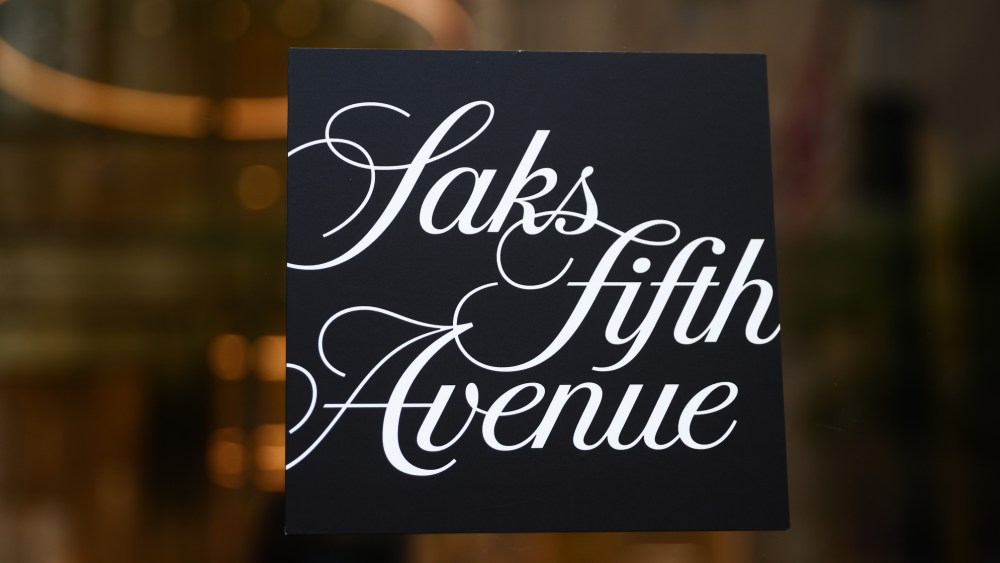PARIS — Piaget wants to remind the world how vibrant it is at age 150, with the launch of the Polo 79 watch and a new retail concept as the opening gambits of its anniversary year.
“What we want to express here is the know-how of the brand both in craftsmanship and creativity,” said chief executive officer Benjamin Comar.
Launched in 1979, the original timepiece “changed the company culture, in the way they did business with small series and special orders to something more akin to ready-to-wear,” the executive continued.
A full-gold sporty elegant watch constructed from alternating polished gadroons and brushed blocks, the waterproof, shockproof model came with an integrated bracelet to match the demand of well-heeled clients who wanted a sportier alternative to the dress watches they usually reached for.
Yves Piaget “understood that trends had changed but also that there were differences between the luxury consumption of European and American [customers],” with the latter driving toward a casual chic interpretation of luxury, said head of patrimony Jean-Bernard Forot.

While hewing close to its predecessor, the 18-karat gold Piaget Polo 79 has received a number of updates, starting with a slightly bigger 38mm size and the use of an ultrathin 1200P1 in-house self-winding calibre instead of a quartz movement.
Beyond the launch of a product embodying the house ideal of “past and present colliding into flamboyance,” it’s another piece in the brand-burnishing strategy that Comar has put in place since arriving at the helm in 2021.
It seems to be paying off, if the Piaget executive’s comment that the brand’s storytelling is “doing the job for us” is anything to go by.
Though its parent group Compagnie Financière Richemont does not break out results for individual houses, according to Morgan Stanley reports on the Swiss watch industry with consulting firm LuxeConsult, Piaget’s turnover rebounded from 2020’s low point of 181 million Swiss francs to an estimated 265 million Swiss francs in 2022.
Its estimated number of watches sold likewise increased by nearly a third, but remained lower than prepandemic levels.
While the Piaget executive did not comment on these figures, he noted that interest in the brand had markedly stepped up.
“Engagement rates are really improving and we are seeing more and more interest in our vintage pieces, at auctions and so on,” he said. “People are interested in what makes Piaget unique in the market: flamboyance, creativity but always being chic.”
Prospects are all the better thanks to Piaget’s position as both a watchmaker and jeweler. Comar remained confident that Piaget’s high-end positioning in watches and a very dynamic jewelry market would see it through current macroeconomic and geopolitical concerns.

“We have been improving our jewelry in the past 10 years, catching up with watches and staying on those two legs is very important for us,” he said, saying that jewelry had been part of the company since 1955. “We want to be balanced in the two [fields].”
High-ticket items are a likely area of growth but the executive insisted that Piaget has no intention of letting go of its entry-level offer, although prices may mechanically increase due to rising precious materials and labor costs.
Evolution in consumer habits, the reassurance offered by hard luxury but also the ever-rising price of apparel and accessories are likely to reinforce the dynamic. “Now you get a very nice piece of jewelry — durable, transmittable, repairable — at the level of a handbag, and that puts jewelry in the mind of a wider population in general,” said Comar.
That widening “is a lot about geographics,” he added. In his opinion, age “doesn’t mean anything in today’s world” because people are selecting based on integrity, although that makes younger demographics more attuned to a brand’s authenticity.
While the brand has been seeing an emerging clientele in the U.S. and returned growth in its historic European home market, its strongest opportunities lie in markets whose appetites in luxury or for Western jewelry brands are more recent, such as Australia, Scandinavia or South Asia.
Take Thailand.
“The culture of jewelry is very strong [there] and used to be reserved to local makers, but now it’s expanding to international brands,” Comar said. In September, Thai actor Nattawin “Apo” Wattanagitiphat was named the first friend of the brand for the region, and Piaget recently opened a boutique in Bangkok.
Vietnam, where it opened a second boutique, in Ho Chi Minh City, and India, which is showing “very good signs,” are also areas of focus.
As for the Korean market, “a very advanced market” for Piaget, according to Comar, being strong there means tapping into its impact on other Asian markets. “It has a lot of influence in terms of marketing and culture,” he continued.
In a bid to get the brand in front of more eyes, Comar said the focus would be “relooking rather than opening” boutiques in Piaget’s retail network of 140 doors worldwide, although that number could grow to 160. Paris, Hong and Tokyo were among the destinations he cited as being on the improvement list.

Hence the other statement Piaget is making to start this anniversary year: a new retail concept.
Unveiled at its address in the upscale Taipei 101 mall in Taiwan, it leans into the “House of Gold” facet of Piaget’s identity and was designed by New York-based architect and designer Rafael de Cárdenas.
Textured golden panels alternate with glass windows to play on contrasts for the facade, while murals inside in shades of green, blue and gold nod to the brand’s play on textures and ornamental stones across the retail spaces and VIP areas. Space has been made for curios as well as vintage pieces.
“We want to have the art of welcoming what we have and express that collision of past and present,” said Comar. “We have great stories to tell and maybe we didn’t tell them enough.”
Later in the year, the brand will further lean into this desire to be seen, rather than just sell itself, to a wider audience by opening the showcase of its next high jewelry collection to the public in Paris in June.
“The faster the world goes, the more luxury, [especially] the traditions and craftsmanship in its making, will be important,” Comar said, highlighting how interest in craftsmanship of all kinds ballooned during the COVID-19 pandemic and durably boosted the luxury segment. “We are very happy to show to the world what Piaget is about.”



